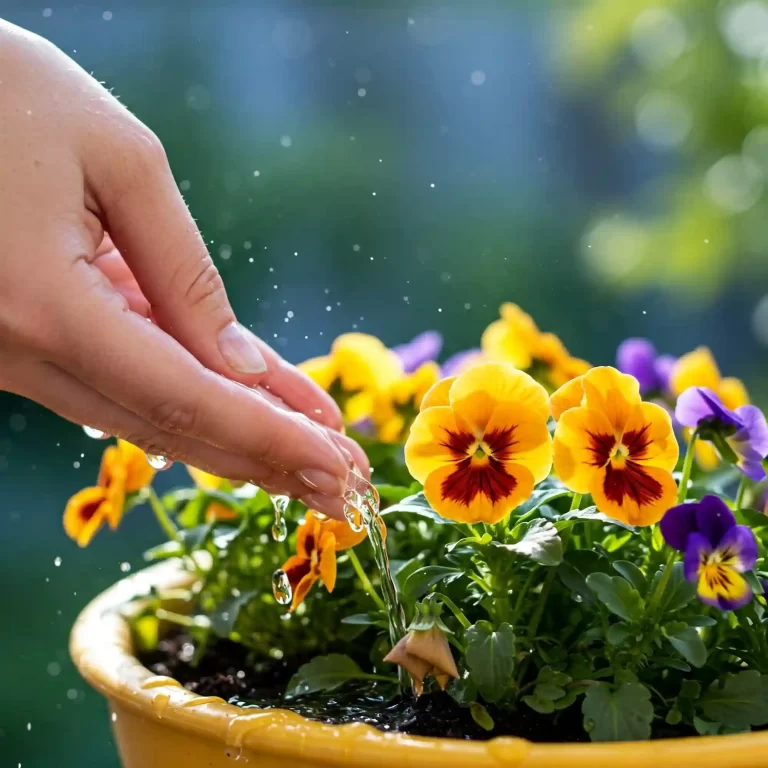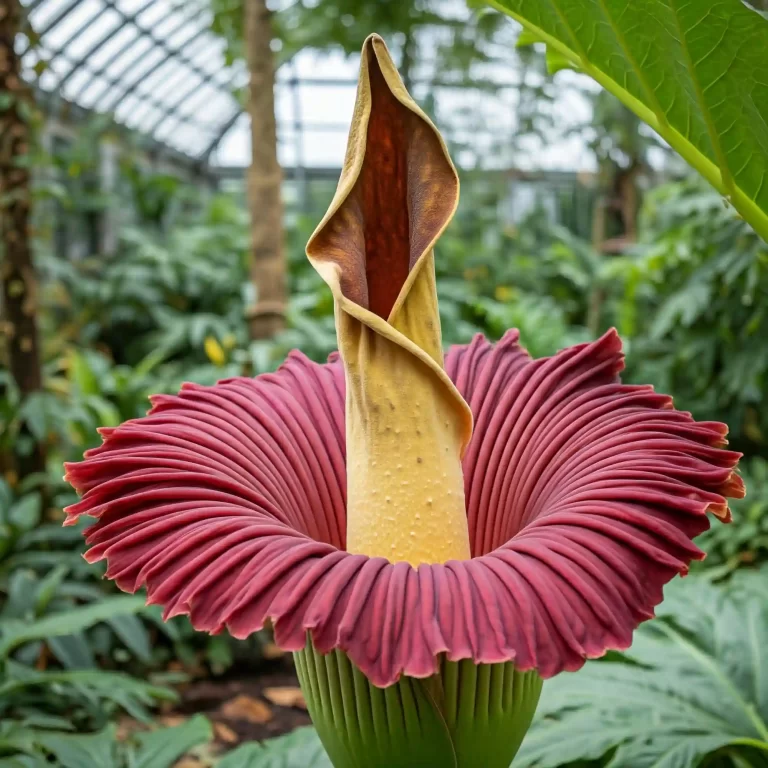Ever craved a splash of vibrant pink in your garden that not only attracts pollinators but boasts potential medicinal properties? Look no further than motherwort (Leonurus cardiaca)! This easy-to-grow perennial flower offers a delightful combination of beauty, utility, and resilience, making it a perfect addition to any garden.
However, navigating the world of plant care, especially for beginners, can feel overwhelming. Fear not! This comprehensive guide will unveil the secrets to cultivating stunning motherwort flowers, transforming your garden into a haven of color and potential well-being (consult a doctor before using medicinally).
Here’s what you’ll discover:
- Simple steps to cultivate vibrant motherwort blooms (planting, watering, and maintenance)
- Expert tips to maximize flower production
- Creative ways to utilize motherwort in your garden design
Let’s delve into the world of motherwort and unlock its potential in your garden!
Choosing the Perfect Spot: Sunshine and Space for Success
Motherwort thrives in locations that mimic its natural meadow habitat. To cultivate vibrant blooms, provide your plants with a healthy dose of sunshine. Aim for at least 6-8 hours of direct sunlight per day. While motherwort tolerates partial shade, full sun exposure encourages optimal growth and flower production.
Considering Soil Conditions:
Motherwort isn’t overly picky about soil type, but well-drained and fertile soil is ideal. If your existing soil is heavy clay, consider amending it with sand or compost to improve drainage. Conversely, sandy soil can benefit from the addition of organic matter like compost or aged manure to enhance moisture retention.
Spacing for Airflow and Growth:
Motherwort plants can reach a mature height of 2-4 feet and spread up to 2 feet wide. When planting multiple motherwort specimens, ensure adequate spacing of 18-24 inches between plants. This allows for proper air circulation, preventing fungal diseases, and encourages healthy growth.
Planting Motherwort Seeds: Witnessing the Magic of Sprouting Life
Planting motherwort seeds is a rewarding experience, allowing you to witness the transformation from tiny seed to vibrant flower. Here’s a breakdown of the process:
Selecting Seeds:
Opt for high-quality seeds from reputable gardening suppliers. Fresh seeds generally boast higher germination rates.
Planting Time:
Sow motherwort seeds directly outdoors in early spring once the danger of frost has passed. Alternatively, you can start seeds indoors 6-8 weeks before the last frost date for an earlier bloom.
Preparing the Seedbed:
Loosen the soil in your chosen planting location to a depth of 4-6 inches. Rake the soil smooth and create shallow trenches about ¼ inch deep.
Sowing the Seeds:
Scatter the seeds evenly along the trenches, maintaining a spacing of about 1 inch between seeds. Gently cover the seeds with a thin layer of soil.
Watering Wisely:
Water the planted area gently to ensure the seeds stay moist but not soggy. Consistent moisture is crucial for germination.
Germination Magic:
Motherwort seeds typically germinate within 14-21 days under optimal conditions.
Thinning Seedlings (Optional):
Once seedlings reach a height of 2-3 inches, you can thin them to ensure proper spacing. Use sharp scissors to snip off weaker or crowded seedlings.
Patience is Key:
Motherwort plants typically take one year to reach maturity and produce their first blooms. However, with proper care, you can enjoy these beautiful flowers for years to come.
Nurturing Your Motherwort: A Guide to Watering and Feeding
Once your motherwort seedlings are established, providing them with the right balance of water and nutrients is essential for optimal growth and flower production.
Watering Wisely:
Motherwort is a relatively drought-tolerant plant, but consistent moisture is crucial during its establishment phase. Water deeply when the top inch of soil feels dry to the touch. Avoid overwatering, as this can lead to root rot. As your plants mature, they become more tolerant of dry spells.
Feeding for Flourishing Blooms (Optional):
While motherwort isn’t a heavy feeder, a light application of fertilizer can encourage vigorous growth and flower production. A balanced organic fertilizer, applied once a month during the growing season, can be beneficial. Alternatively, top-dress your plants with a layer of aged manure or compost in early spring.
Remember, moderation is key when fertilizing motherwort. Excessive fertilization can result in leggy growth and fewer flowers.
Encouraging Abundant Blooms: The Art of Deadheading
Motherwort boasts beautiful pink flowers that typically bloom from midsummer to early fall. To maximize flower production throughout the season, a technique called deadheading is beneficial.
What is Deadheading?
Deadheading involves removing spent flowers (flowers that have begun to wilt and fade) from the plant. This simple practice encourages the plant to redirect its energy towards producing new blooms instead of focusing on seed production.
How to Deadhead Motherwort:
- Use sharp pruners or scissors to snip off the spent flower head just below the base of the flower stalk.
- You can also pinch off the flower head with your thumb and forefinger.
- Regularly deadhead your motherwort plants throughout the blooming season to promote continuous flower production.
Benefits of Deadheading:
- Encourages more blooms: By removing spent flowers, the plant is prompted to focus on producing new ones, extending the flowering period.
- Maintains a tidy appearance: Deadheading keeps your motherwort plants looking neat and attractive throughout the season.
By incorporating deadheading into your motherwort care routine, you can enjoy a vibrant display of pink flowers throughout the summer and early fall.
Harvesting Motherwort Flowers: Capturing Nature’s Bounty
Motherwort flowers boast not only aesthetic appeal but also potential medicinal properties (consult a doctor before using medicinally). Here’s a guide to harvesting them for various uses:
When to Harvest:
The ideal time to harvest motherwort flowers is when they are fully open and have a vibrant pink color. Typically, this occurs during the peak blooming period, which lasts from midsummer to early fall.
Harvesting Techniques:
- Use sharp pruners or scissors to snip off individual flowers or flower clusters at the base of the stem.
- Avoid cutting too close to the main stem, as this can damage the plant.
Drying Motherwort Flowers:
- To preserve your harvested flowers for later use, drying is an effective method.
- Gather the flowers in loose bunches and tie the stems together with twine.
- Hang the bunches upside down in a cool, dark, well-ventilated location out of direct sunlight.

- Alternatively, you can use a dehydrator for faster drying. Follow the manufacturer’s instructions for optimal results.
Storing Dried Flowers:
Once the flowers are completely dry and brittle, store them in airtight containers in a cool, dark place. With proper storage, dried motherwort flowers can retain their potency for up to a year.
Designing with Motherwort: A Touch of Pink Perfection
Motherwort’s vibrant pink blooms and attractive square stems add a touch of whimsy and elegance to any garden design. Here are some creative ways to incorporate this versatile flower into your outdoor haven:
A Touch of Color in the Border:
Plant motherwort in your flower borders alongside other midsummer bloomers like catmint (Nepeta x faasseni), bee balm (Monarda didyma), or yarrow (Achillea millefolium). The contrasting colors and textures create a visually stunning display.
A Butterfly Buffet:
Motherwort’s nectar-rich flowers attract a variety of butterflies and other pollinators. Include motherwort in your butterfly garden to create a vibrant haven for these beneficial insects.
Cottage Garden Charm:
The unfussy nature and charming pink blooms of motherwort make it a perfect addition to a cottage garden. Plant it alongside other cottage garden favorites like hollyhocks (Alcea rosea), foxgloves (Digitalis purpurea), and lavender (Lavandula angustifolia) for a nostalgic and romantic feel.
Container Magic:
Motherwort’s adaptability makes it suitable for container gardening. Choose a pot with adequate drainage holes and use a well-draining potting mix. Place the container in a location receiving at least 6-8 hours of sunlight per day. Motherwort in pots adds a pop of color to patios, balconies, or sunny windowsills.
By incorporating these design ideas, you can transform your garden into a vibrant and welcoming space using the beauty and versatility of motherwort.
Troubleshooting Common Motherwort Issues: A Gardener’s Guide
While motherwort is a relatively resilient plant, a few common issues can arise. Here’s a quick guide to troubleshooting some potential problems:
Problem: Slow Growth or Lack of Flowers
Possible Causes:
- Insufficient Sunlight: Motherwort thrives in full sun. Ensure your plants receive at least 6-8 hours of direct sunlight daily.
- Nutrient Deficiency: A lack of fertilizer can hinder growth and flower production. Consider a light application of balanced organic fertilizer during the growing season.
- Overcrowding: When planted too close together, motherwort can compete for resources, leading to stunted growth. Ensure proper spacing of 18-24 inches between plants.
Solutions:
- Relocate plants to a sunnier location if necessary.
- Apply a light application of balanced organic fertilizer once a month during the growing season (optional).
- Thin crowded seedlings to allow for proper spacing.
Problem: Yellowing Leaves
Possible Causes:
- Overwatering: Motherwort prefers well-drained soil and can suffer from root rot if overwatered.
- Nutrient Deficiency: A lack of essential nutrients can cause yellowing leaves.
Solutions:
- Allow the soil to dry completely between waterings. Water deeply when the top inch of soil feels dry to the touch.
- Consider a light application of balanced organic fertilizer once a month during the growing season (optional).
Problem: Pests or Diseases
Possible Causes:
Motherwort is relatively pest and disease resistant. However, on rare occasions, it might be susceptible to aphids, powdery mildew, or fungal diseases.
Solutions:
- Encourage beneficial insects like ladybugs and lacewings to help control aphids naturally.
- For severe infestations, insecticidal soap or neem oil can be used organically.
- Practice good garden hygiene by removing and disposing of infected plant parts.
Remember: Early detection and intervention are key to managing any potential issues with your motherwort plants.
By following these troubleshooting tips, you can keep your motherwort plants healthy and thriving throughout the season.
Conclusion: Motherwort – A Rewarding Addition to Your Garden
Motherwort’s combination of easy care, vibrant blooms, and potential medicinal properties (consult a doctor before using medicinally) makes it a captivating addition to any garden. This guide has equipped you with the knowledge to cultivate stunning motherwort flowers, transforming your outdoor space into a haven of beauty and potential well-being.
From choosing the perfect planting location to troubleshooting common issues, you now possess the skills to nurture these resilient plants and witness their transformation from tiny seeds to vibrant blooms. Remember, with a little patience and care, your motherwort will reward you with a season of captivating pink flowers and the satisfaction of cultivating a piece of nature’s magic in your own garden.
So, embrace the ease and beauty of motherwort, and witness the magic unfold in your garden!



